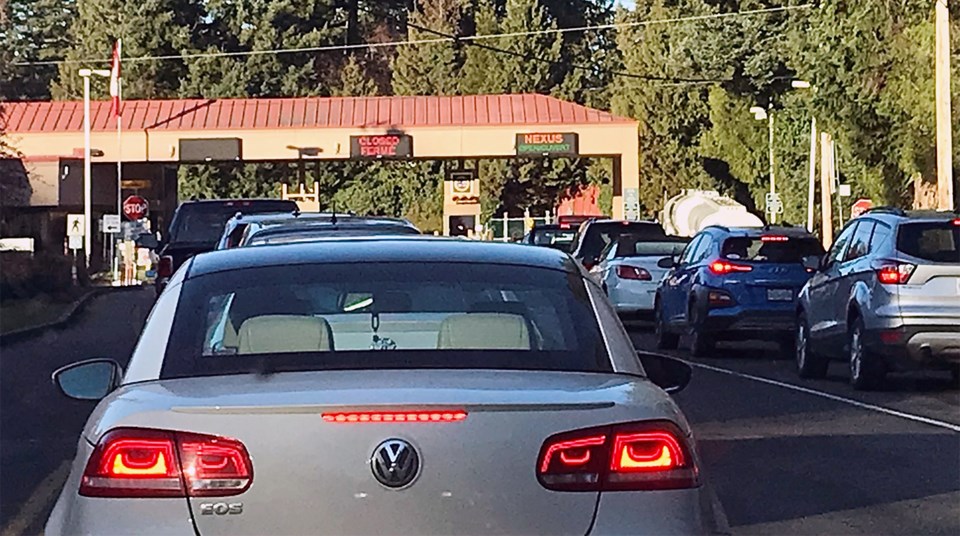Although the Canadian government says its COVID tests at the border are random, some going to Point Roberts are feeling picked on.
Partly as a result, visits by Canadians have dropped, and with it, the economy, says the local chamber of commerce.
Bill Calder grew up in Point Roberts but now lives in Tsawwassen. The pandemic has reduced the number of times he’s crossed the border. In the past three months, he’s visited four times and has been issued a random COVID test twice.
The Public Health Agency of Canada announced that random COVID tests at airports would resume as of July 19, after about a four-week break, but random tests at land borders have continued as usual.
“I just don’t want to go through it again. It’s ridiculous,” said Calder.
His cousin Brian Calder is president of the Point Roberts Chamber of Commerce and says COVID restrictions continue to hurt the tiny community of 800 or so people.
For instance, before COVID, about 900 boats were docked at the marina. Now, there are 300.
He’s hearing complaints about the number of people receiving random COVID test requirements when they cross over into Canada, estimating that 30 per cent of residents have had to take a test when crossing the border.
“That’s my best guess. They won’t give us the numbers,” he said last week.
“It’s totally disturbing our economy in a negative way.”
He said that 90 per cent of the community has been vaccinated, while he hasn’t heard of a COVID case.
“So what good is it doing?”
Calder added that if the tests were needed from a scientific point of view, he’d support it. He wants the government to show how many people have been spared contracting COVID thanks to someone being randomly tested.
Two tests in four visits
One visitor from Vancouver, who has a cabin in Point Roberts, said that she and her husband, in their 70s, have visited four times in May and June.
On the second visit, her husband was issued a random COVID test when he came back into Canada.
On the fourth visit, she was issued a random COVID test.
The couple only stayed the night before heading back. And each COVID test request meant they had to go to a pharmacy in Vancouver, get a nasal swab, and ensure the pharmacy sent it into the lab. Both tests were negative.
“That’s not random. That’s way higher percentage than there should be for the border. It’s like they were doing a blitz on Point Roberts.
“It’s going to kill Point Roberts,” she said.
She says the number of people being tested is disproportionate to the size of the community.
800 random travellers is the national daily land crossing target
However, according to the Public Health Agency of Canada, a computer algorithm “randomly selects a pre-determined number of eligible travellers per day,” at each crossing. That could mean more than one person in a group could be selected for random testing.
The target is 4,600 travellers each day, including 3,800 at airports and 800 at land borders, said Tammy Jarbeau, senior media relations adviser.
The sample size was chosen to ensure that “representative, reliable and robust estimates of COVID-19 test positivity,” are produced at the border.
Neither border officers nor the public health agency have any role in the selection of travellers for random testing, she said.
Positive samples are sent to public health laboratories for whole genome sequencing – the laboratory test used to identify COVID-19 variants of concern, Jarbeau said.
Virtual testing is possible but the government says that in-person testing is the fastest and most convenient.



